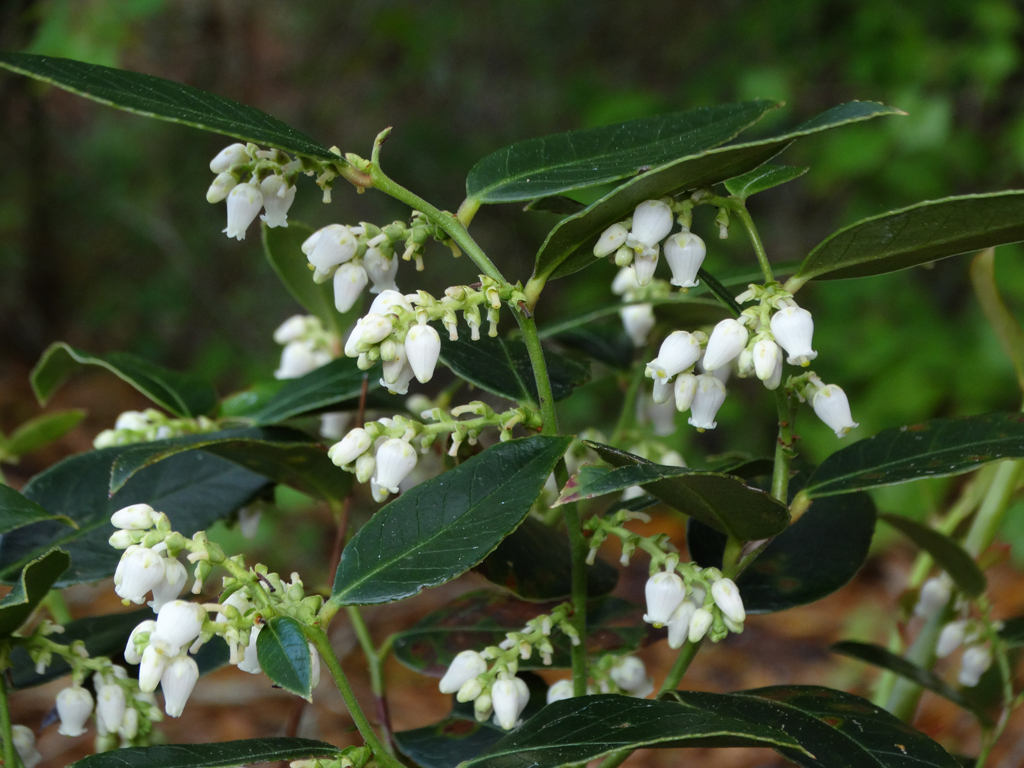Coastal doghobble
Pictured above: Coastal doghobble (Leucothoe axillaris) by Ryan Fessenden. Click on terms for botanical definitions. View post as a PDF.
Coastal doghobble (Leucothoe axillaris) is an evergreen shrub found in swamps, wet hammocks and flatwoods, and along stream edges. Its profusion of spring-blooming flowers is pollinated primarily by bees.
Flowers are white to pinkish-white, waxy and urn- or bell-shaped. They are born in drooping, axillary racemes. Calyces are five-lobed. The leaves are simple, leathery and elliptic to lanceolate with pubescent petioles. The upper surfaces are dark green; undersides are lighter in color. Margins may be entire or have irregular serration. Leaf arrangement is alternate. Branches are loose and generally arching. The fruit is a round, dark brown capsule.
The genus name Leucothoe is from the Greek leukós, or “white,” and alludes to the bloom color. The species epithet axillaris is from the Latin axilla, or “armpit,” and references how the flowers are born in the leaf axils. According to legend, the common name “doghobble” originated with hunters whose dogs would become tangled in the plant’s branches while chasing quarry.
Family: Ericaceae (Heath family)
Native range: Panhandle, some North and Central Florida counties
To see where natural populations of Coastal doghobble have been vouchered, visit florida.plantatlas.usf.edu.
Hardiness: Zones 8A–9B
Lifespan: Perennial
Soil: Wet to moderately dry acidic soils
Exposure: Partial to full shade
Growth habit: 3–5’ tall
Propagation: Cuttings, seed
Garden tips: Coastal doghobble is best suited for moist, shady landscapes, but requires good air circulation to prevent leaf spot diseases. Its interesting evergreen foliage and showy flowers keep it attractive throughout the year.
Coastal doghobble is available from nurseries that specialize in Florida native plants. Visit www.PlantRealFlorida.org to find a nursery in your area.

